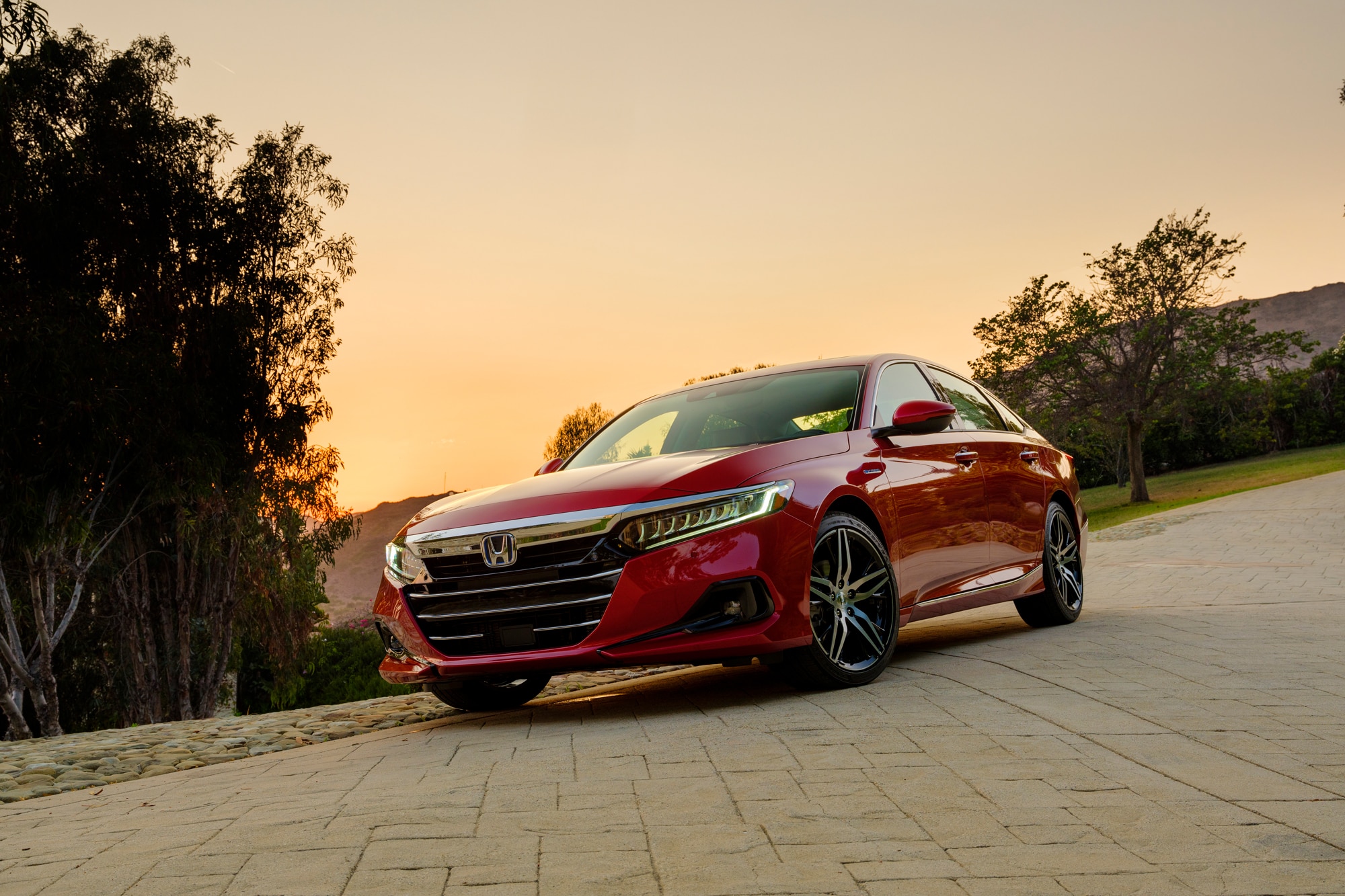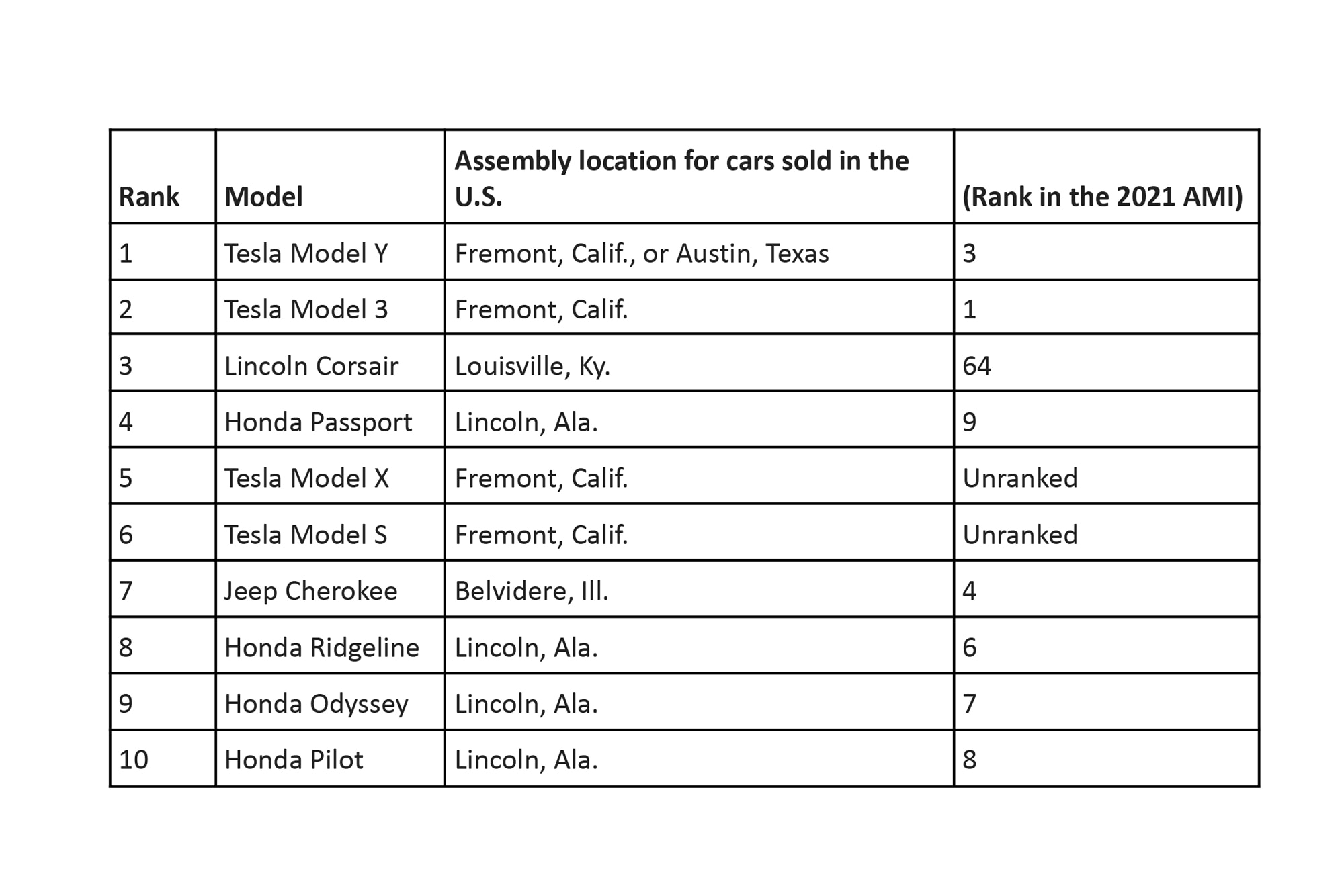What Makes a Car American-Made?
With Buicks built in South Korea and Hondas hailing from Alabama, defining what constitutes a domestic vehicle gets more complicated by the year.
 Honda
Honda
Article QuickTakes:
The auto industry’s globalization over the past few decades has blurred lines that once clearly defined American cars and imports, leaving some buyers to reasonably ask what “American-made” means today.
Over the past 45 years, more than two dozen import-brand auto plants have sprung up across mostly Midwest and Southern U.S. states to build a wide variety of vehicles, from compact sedans to luxury SUVs. As of November 2022, about 20 of those assemble vehicles, while another dozen or so produce engines, transmissions, EV batteries and other components. Traditional American automakers, meanwhile, which operate about 25 U.S. vehicle assembly plants, import some models from factories in Canada, Europe, South Korea, Mexico and China.
As just a few examples of how this looks to consumers, consider that Buick, the foundational brand of General Motors 114 years ago, offers two models built in South Korea. Hyundai, a Korean automaker that entered the U.S. market in 1986, builds several models in U.S. plants. And, it can seem like a topsy-turvy world indeed when Jeep, a brand as American as baseball, builds its Renegade small SUV in Italy, and Swedish automaker Volvo, owned by Chinese conglomerate Geely, produces S60 sedans in South Carolina.
What’s the Meaning of an American-Made Car?
To bring some clarity to consumers, automotive research site Cars.com began producing its annual American-Made Index (AMI) in 2006, which ranked the top 15 “most American” passenger vehicles.
“The original idea for the AMI was to dispel the notion that to be an American vehicle, it had to be built by the Detroit Three,” says Cars.com editor-in-chief Jennifer Newman, referencing Ford Motor Company, General Motors and the former Chrysler Corporation (Chrysler is now part of Stellantis, an umbrella company for 16 American and European brands).
Starting in 2020, Cars.com expanded the AMI to rank far more vehicles that meet five criteria the publisher says establishes them as “American-made.” Researchers rank each vehicle based on assembly location, parts content, the origin of its engine and transmission, and the size of the automaker’s U.S. manufacturing workforce relative to its production footprint. Position on the list depends on numerous factors within those criteria, though Cars.com does not reveal details, nor how much weight it gives each factor.
“For consumers, the easiest part to understand is 'built in the U.S.' All the 95 cars on the 2022 list are built here, though with varying degrees of North American parts content,” says Newman. “For example, engines and transmissions, the highest-value components in the car, may still come from outside North America for some vehicles on the list.”
Newman explains a change of parts sources, especially the engine, can move a vehicle's AMI rank up or down year to year, sometimes significantly. The Lincoln Corsair SUV moved up to number 3 on the 2022 list from number 64 last year, because Ford switched the engine supply from its factory in Valencia, Spain to a plant in Cleveland, Ohio. The Ford Escape offers the same 2.0L turbocharged engine as an option but sits at number 70, because its base engine comes from a Ford plant in the United Kingdom.
Yearly Surprises
Since the AMI was first published, the index has been known to raise eyebrows, for both the vehicles it includes and those it omits.
“Honda has four vehicles in the top-10. This has been consistent for them, but it is still a surprise to a lot of Cars.com readers,” Newman says.
Yet, two quintessential American muscle cars, the Dodge Challenger coupe and Charger sedan, do not appear on the AMI at all. The reason? They’re built in Brampton, Ontario, Canada, and their mighty HEMI® V8 engines come from a plant in Mexico.
Does Being American-Made Matter to Buyers?
Newman says Cars.com research shows that the idea of “American-made” carries weight with a portion of buyers.
“We found that 40% of shoppers say they consider a car’s U.S. economic impact a significant or deciding factor in their vehicle purchase,” Newman says. “That was a 22% increase over 2021. We attribute this to the pandemic, with people considering if a car purchase is going to help their neighbor.”
Finding a car that is American-built, even if it is not from a traditional U.S. brand, can satisfy such buyers, she explains. Not all market researchers see an “American-built” preference trending, however.
“We've seen the importance of 'American-made' decline,” says Ed Kim, president and chief analyst for market research firm AutoPacific. “It is still important in some segments, such as full-size pickup trucks, and for some older customers. Our Vehicle Satisfaction Study used to include a question about the importance of 'Made in America' but the responses didn’t change much over time, so we removed it five years ago.”
The same study cites three top auto purchase reasons that Kim says “don’t vary much” from year to year: first is overall durability/quality/reliability, then value for the money, followed by a six-way tie for front seat comfort, ride, braking, handling, price, driver’s visibility, safety features and safety ratings.
What’s more, Kim cites a gap between what consumers express in surveys and how they act when buying. “Consumers always seem to cite fuel economy as very important, for example, but their actual purchases do not always line up with that.”
The Impact of Electrification
As the auto industry pivots toward an electric future, it's worth noting that the only EVs appearing on the 2022 Cars.com AMI are the four that Tesla builds, which made the top-10, and the Tennessee-built Nissan Leaf in the number 89 position.
The absence of other U.S. built EVs from the list underscores how global assembly arrangements can muddy the meaning of “American-made,” just as for gas-fueled vehicles. Cars.com excluded some because they are 2023 models (Ford F-150 Lightning and Cadillac Lyriq), do not meet a set production threshold or use too many components, including batteries, imported from outside the U.S. or Canada.
The White House, meanwhile, wants to mitigate that last reason. Intended to help stimulate domestic EV battery production, the Inflation Reduction Act of 2022 presented to Congress would extend federal tax credits of up to $7,500 for new EVs and $4,000 for used models through the year 2032. Credits for new EVs would become contingent on carmakers using a rising scale of battery materials and components sourced from the U.S. or trade-partner countries.
GM, for one, projects that it will be building only EVs within about 15 years. Other automakers have set more- or less-aggressive targets. Below are the top 10 vehicles on the 2022 American-Made Index:
 SOURCE: CARS.COM
SOURCE: CARS.COM



